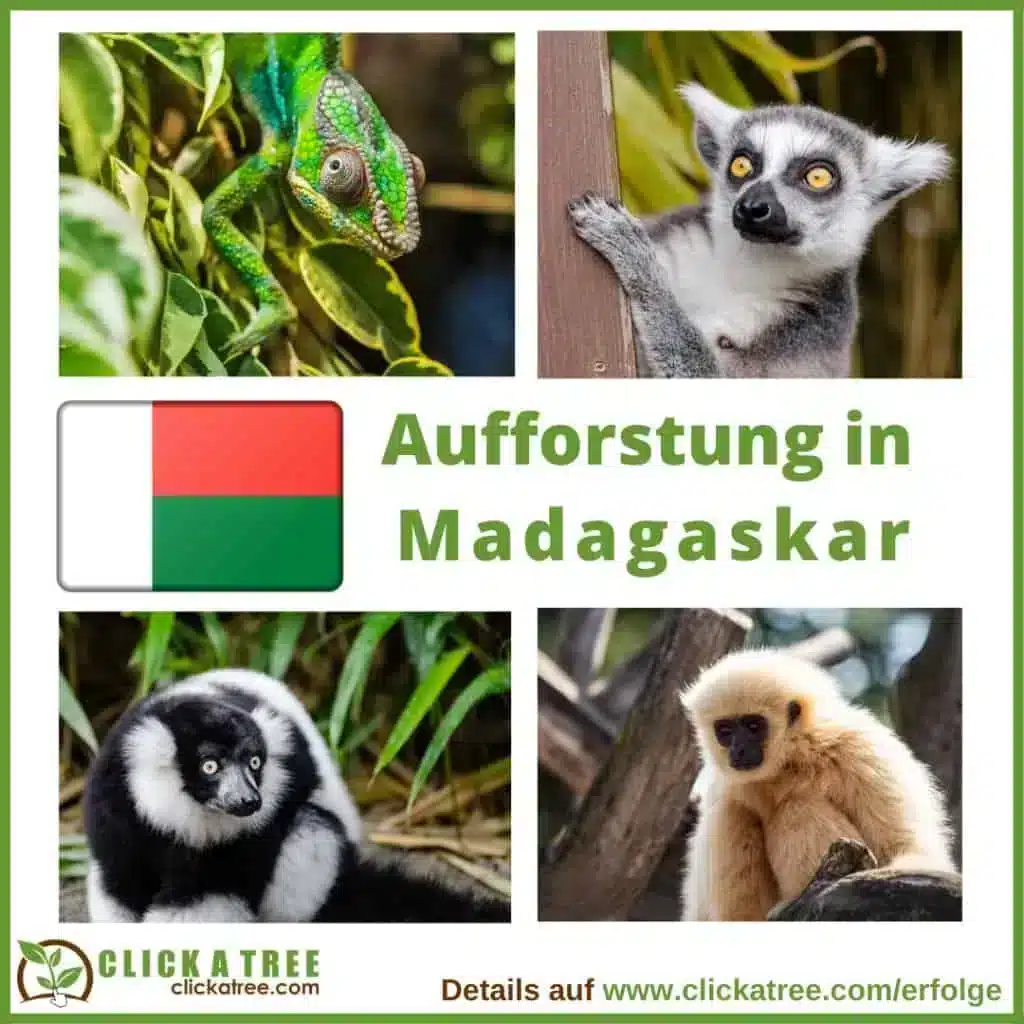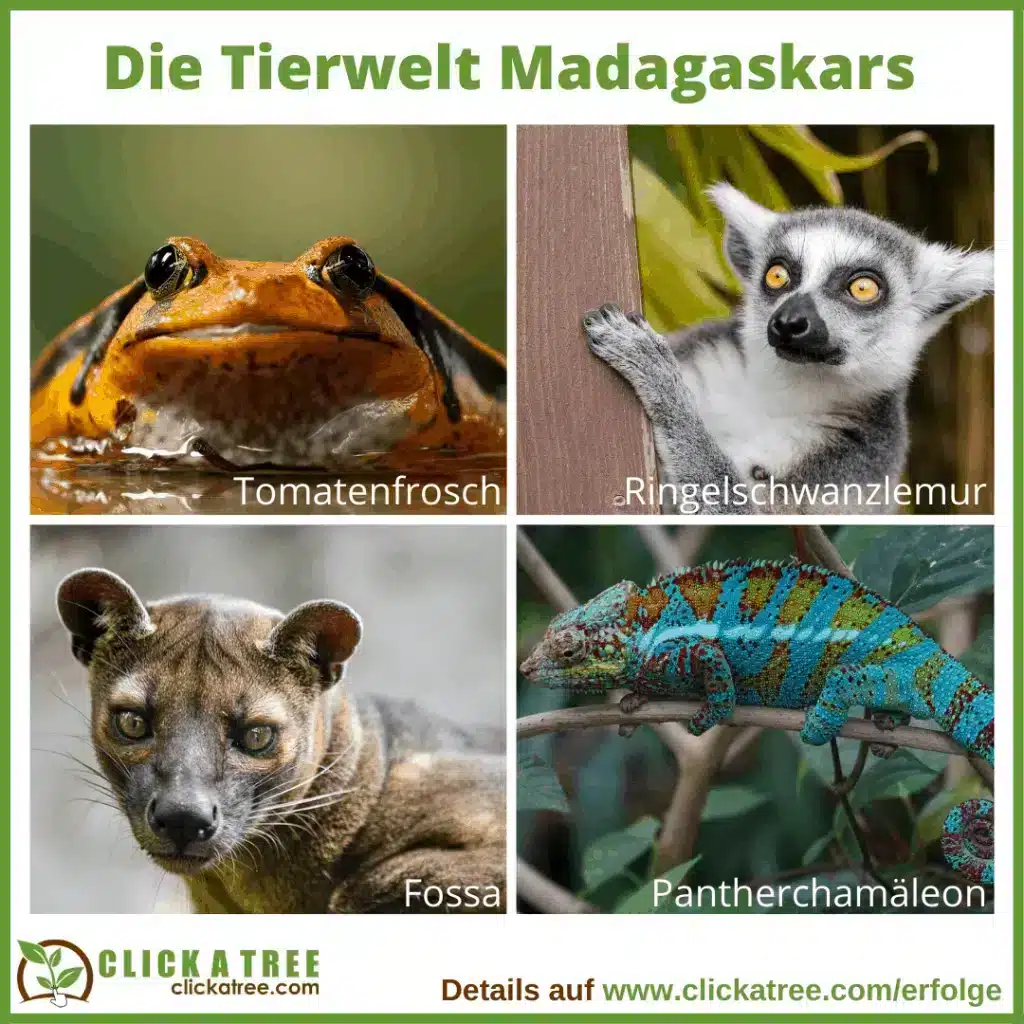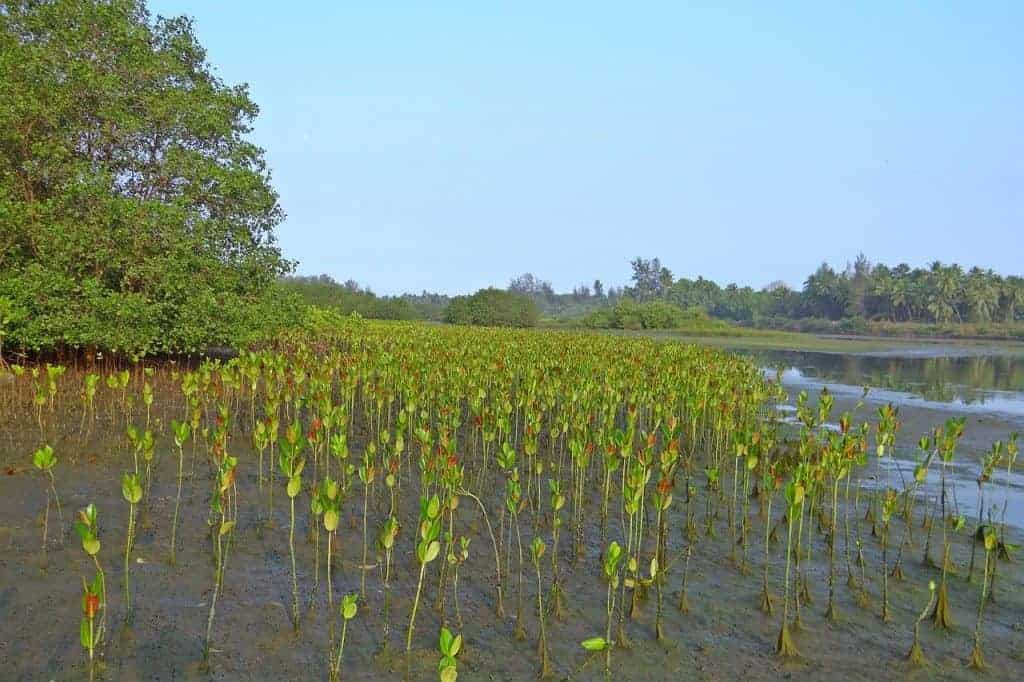Reforestation in Madagascar
Why we plant trees in Madagascar
In 2018, we started planting trees in Madagascar with our travel tool B’n’Tree. But why is reforestation in Madagascar so important? What are the benefits?
In 2018, we started planting trees in Madagascar with our travel tool B’n’Tree. But why is reforestation in Madagascar so important? What are the benefits?
The answer, and why you should definitely visit this breathtaking island, can be found here.
We will show you what we have achieved so far and how you too can benefit from our work in this beautiful country without even knowing about it.

Madagascar is one of the countries with the most beautiful natural landscape in the world. The tropical climate and the good location south-east of Africa’s coast provide the country with breathtaking wildlife and beautiful sandy beaches.
No wonder the island is an absolute “must-see” for many. So you should definitely think about Madagascar as a vacation destination. However, Madagascar is historically one of the poorest countries in the world.
Its landscapes have been abused in the desperate search for profitable natural resources.
We are working hard with local communities and conservation experts to right the wrongs of the past. Our aim is to fully exploit the potential of Madagascar’s agricultural resources.
Why reforestation is important in Madagascar
Madagascar has a long history of political and economic instability. It was not until 2009 that political power was transferred to the military in a violent coup d’état.
Unfortunately, environmental studies and efforts to protect the environment are quite low on the country’s long agenda. A large part of Madagascar’s species-rich habitat has been destroyed.
Madagascar’s deforestation problem
It is estimated that an incredible 80% of the island’s original forest has been wiped out. This has a devastating effect on the quality of vital soils. In addition, a huge proportion of valuable habitats of many already endangered ecosystems has been lost.
The rare mangrove forests and swamps are particularly important and in need of protection. As most of Madagascar’s biodiversity is found nowhere else, it is important that these ecosystems have a place to live and reproduce.
Also interesting: Planting treesanzen in Ghana. A new project from Click A Tree
Where we plant trees
Most of our reforestation work in Madagascar takes place on the north coast of the island. Specifically, we are working near the Mahajanga area.
Mahajanga is the fourth largest city in Madagascar, and we are working on the shores west of it at 16°12’05.2 “S, 44°29’07.9 “E. We have found a skilled workforce and serious enthusiasm for repairing one of the areas most affected by mangrove removal.
But why are we planting mangrove trees in particular? Read on to find out more about their amazing properties for the environment.
Change through afforestation
Through reforestation in Madagascar, we are achieving far-reaching ecological and social successes. We are creating a future for insects, birds and the entire flora and fauna of the country. Their habitats are protected, allowing them to develop freely again.
Where locals were previously forced to work in logging and the dangerous extraction of other natural resources, they can now earn a fair wage for planting trees. A new and sustainable income has been created for local families.
The changes brought about by our work are truly impressive. Does that sound too good to be true? Read the remarkable success story of Mary and Boto. If that still doesn’t convince you, we explain the social and environmental benefits in detail below.

Environmental benefits of reforestation in Madagascar
The benefits for our environment that we all derive from the reforestation of Madagascar cannot be overestimated. We need to take immediate action to replace the huge quantities of trees that have already been lost through deforestation.
The reforestation of Madagascar’s coastline will create a carbon sink in the long term and help to restore the natural balance of the atmosphere. In addition, the reforestation of other tree species ensures that the rapidly dwindling wildlife populations recover and that these animals have a future.
The unique animals of Madagascar
Many of the island’s endemic (= nowhere else in the world!) ecosystems are 90% dependent on trees. For most of us who think of Madagascar, the first thing that will come to mind is the image of the various half-monkeys, called lemurs.
In fact, Madagascar is home to many other species that cannot be found anywhere else in the world. These include tomato frogs, panther chameleons, fossas, fingered animals and a few more.
This makes Madagascar one of the most unique wildlife habitats on the planet. Unfortunately, many of these species are threatened with extinction: reforestation in Madagascar can help to increase their numbers again.

The magic of mangrove forests
The north and west coasts of Madagascar are adorned with a huge population of mangrove forests. A typical feature of these trees, which grow in tropical regions, is their location. They grow in soils saturated with water, where fine sediments collect.
They serve as a natural storm barrier for the communities, preventing flooding and erosion of important soils.
Mangroves also store a surprisingly large amount of carbon dioxide and other greenhouse gases, which they trap in flooded soils. When the trees are felled, these harmful, stored gases are released from the soil into the atmosphere.
Recent research has drawn attention to the extremely worrying effects of mangrove deforestation. One study concluded that mangrove deforestation alone could have been responsible for the release of almost 450 million tons of CO² into the atmosphere.
This corresponds to the amount of CO² that Brazil (the world’s 11th largest CO² emitter) releases in one year. Another comparison: an average coal-fired power plant in the USA produces 4.6 million tons of CO² per year. It is therefore assumed that the deforestation of mangroves has produced 100 times more. (Source: aashe)
The reforestation of mangroves can create long-term carbon sinks. Their expansion could increase the crucial storage of carbon along the coastline of many tropical countries. The island of Madagascar, with just under 5,000 km of coastline, benefits enormously from mangrove reforestation.

Social benefits of reforestation in Madagascar
We’ve talked about the environmental benefits of reforestation in Madagascar, but what about the 25 million people who live there? How do they benefit from reforestation?
The advantages for local people
First of all, many families, like Boto and Mary, now receive a fair wage for safe work. Thanks to Click A Tree, tree planting has now become a full-time job for the locals. This provides the first generation with a secure income and the next generation with a much better living environment.
Secondly, Click A Tree ensures that there is a great benefit for the community thanks to the reliable income. The locals can afford to build more durable houses, buy luxury goods such as mattresses and even build schools.
In the past, most children in Mahabana and Mahajanga had to work to earn an income. Nevertheless, families were often unable to afford the school fees. Today, many children go to school and even learn about the environment there.
Thanks to family support, school leavers are able to continue their education afterwards. For example, they have the opportunity to study nature conservation at universities. More bright minds mean more prospects for the future of Madagascar and its rare biodiversity.

The advantages for the country
Mangroves also play a role in the quality of the soil. Their widespread roots supply the soil with nutrients and prevent erosion. They dig deep into the mud and form a fortress, which also prevents desertification. This is particularly important in coastal areas with a lot of soil erosion.
An estimated 80% of Madagascar’s population depends on the natural resources of trees. And at least 70% are dependent on the surrounding vegetation and agriculture.
Without mangroves, the soil is less fertile, storm waves can become much larger and reach further inland, as the coastline is not protected. Crops that are urgently needed as food, as well as medicinal plants, are beginning to disappear.
The more trees we plant, the healthier and more protected the land is.
How do we benefit from reforestation in Madagascar?
Shouldn’t these be enough reasons to be convinced of the importance of mangroves? But there is also a benefit for all of us that should not be neglected.
By reforesting in Madagascar, we are helping to combat climate change. Mangroves can help to offset harmful air pollution and mitigate the rise in global temperatures.
No matter where we plant trees, we are creating a greener, healthier environment for millions of people.
Stable incomes reduce poverty among Madagascans and enable a more comfortable life and education for the next generation. Where in the past harmful practices were accepted out of necessity, there is now a growing understanding of sustainability.
In addition, reforestation brings benefits for the local economy and for a more balanced distribution of goods. Madagascar has the potential to become a prosperous nation that is less dependent on world aid and world trade.
Fair and sustainable employment opportunities mean that fewer people have to flee and desperately look for work elsewhere.
Why you should go on vacation in Madagascar
If you are thinking of going on vacation to Madagascar, we can only encourage you to do so. Despite its politically and financially troubled history, Madagascar is one of the most rewarding and unique countries to visit.
Madagascar is a colorful and chaotic mix of cultures from all corners of the world, including Asia, Africa and Europe. Thousands of species of mammals, insects and marine animals populate the fourth largest island on the planet. And most of the animals are endemic, so you will only be able to see them there in their natural environment.
The Tsingy Nature Park is all about the incredible natural formations and is a UNESCO World Heritage Site. Here you will find fascinating climbing and hiking opportunities that are also suitable for the really adventurous among you.
In Andasibe-Mantadia National Park, on the other hand, almost a dozen different species of the famous lemur are waiting to be discovered. A trekking trip through the jungle in search of the cute animals is therefore one of the absolute highlights of any trip to Madagascar.
Those who want to take a more relaxed approach are in good hands in the Nosy Be archipelago. These exotic islands are home to picturesque beaches, blue waters and eco-friendly hotels where you can relax. But there is also a whole world of beautiful underwater treasures for divers to discover.

How you can help reforest Madagascar – for free!
When you book your accommodation with our travel tool B’n’Tree, you automatically help to reforest valuable ecosystems. Planting trees with Click A Tree creates a livelihood for many islanders.
It enables people to earn a fair and constant income, thus enabling their children to receive an education. In addition, the unique, endangered wild animals of Madagascar are protected by creating urgently needed habitat.
We all try to travel sustainably, but often our efforts are thwarted by far too high costs. The financial outlay is frustrating and spoils our desire to travel.
The best thing about B’n’Tree is that it won’t cost you a single penny. So what are you waiting for? Book with us and help to reforest this unique island. If you’re not currently on vacation, let your friends and family know about us and share the post on Facebook and Instagram.
And while you’re still thinking about your next travel destination, we recommend you read our article on how to plant trees for free. In it you will find 11 ways you can plant trees without doing it yourself and without paying for it.
Do you agree that Madagascar is worth the effort and needs to be reforested? Have you ever been to this wonderful island? In which country should we start our next project and plant trees?
Subscribe to our free newsletter “GROW” to make sure you don’t miss any news. As a thank you, we plant a tree for every new subscriber!